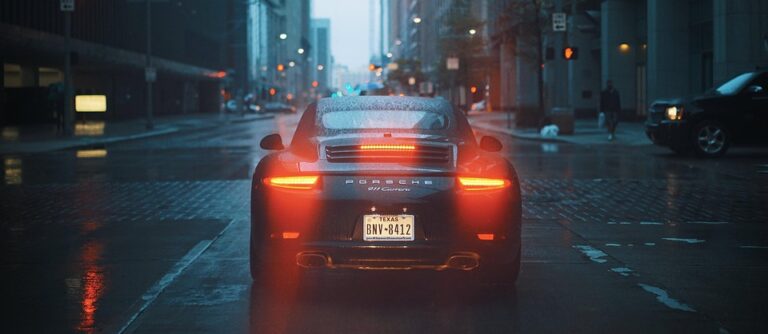Classic vs. Contemporary: A Review of Iconic Cars and Their Modern Counterparts
When it comes to car reviews, few topics spark as much discussion and passion as the comparison between classic cars and their contemporary counterparts. Whether you’re a car enthusiast, a collector, or simply someone who appreciates the beauty of automobiles, understanding the characteristics that define both eras can enhance your appreciation of automotive history and innovation. In this article, we’ll explore iconic models from the past and examine how modern technology and design philosophy have transformed them for today’s drivers.
The Allure of Classic Cars
Timeless Designs and Craftsmanship
Classic cars, those typically produced between the 1920s and the 1970s, hold a special place in the hearts of many. Their designs showcase aesthetic elegance, often characterized by flowing lines and distinct silhouettes. Models like the 1967 Ford Mustang and the 1957 Chevrolet Bel Air are not just vehicles; they are cultural icons that represent freedom, adventure, and the American spirit.
Features of Classic Cars:
- Mechanical Simplicity: Many classic cars offer relatively straightforward mechanical systems that are easier to repair and maintain — a definite plus for DIY enthusiasts.
- Unique Styling: The design ethos of the ’60s and ’70s often stands in stark contrast to modern aesthetics, with bold colors and chrome detailing that evoke nostalgia.
- Connection to History: Each classic car is a time capsule, reflecting the automotive technologies, consumer preferences, and social values of its era.
The Driving Experience
Driving a classic car delivers a unique experience. The sound of a roaring V8 engine or the familiarity of a manual transmission connects the driver to the road in a way many modern cars cannot replicate. This engagement and the raw power of vintage engines provide enthusiasts with a thrilling blast from the past.
The Rise of Contemporary Cars
Innovation and Technology
On the opposite side of the spectrum, modern cars feature cutting-edge technology, enhanced safety measures, and superior fuel efficiency. Brands like Tesla, Audi, and Toyota are redefining what vehicles can do, offering electric cars with advanced features that were unimaginable just a few decades ago.
Advantages of Contemporary Cars:
- Safety Features: Today’s vehicles come equipped with advanced safety technologies such as automatic emergency braking, blind-spot monitoring, and adaptive cruise control.
- Fuel Efficiency and Sustainability: With a focus on environmental impact, most modern cars consume less fuel and produce fewer emissions than their classic predecessors.
- Infotainment Systems: Modern cars integrate sophisticated infotainment systems, allowing drivers to connect their smartphones seamlessly.
The Driving Experience
While classic cars offer a visceral driving experience, contemporary cars prioritize comfort and convenience. Electric and hybrid vehicles provide smooth acceleration and quiet operation, revolutionizing how drivers perceive power.
Comparing Iconic Cars and Their Modern Counterparts
Let’s take a closer look at some notable classic cars and their modern equivalents, highlighting the evolution of design, technology, and performance.
Ford Mustang vs. Mustang Mach-E
The Ford Mustang debuted in 1964 as a symbol of American muscle car culture. Fast forward to today, and the Mustang Mach-E brings that legacy into the electric vehicle era. While the classic Mustang served up raw power, the electric Mach-E emphasizes efficiency, tech integration, and sustainability without sacrificing performance.
Chevrolet Corvette vs. Corvette C8
The Chevrolet Corvette is often seen as America’s sports car, with classic models revered for their speed and style. The new Corvette C8 has garnered acclaim for its mid-engine design, enhanced handling, and astonishing performance metrics, bridging the gap between classic beauty and contemporary engineering.
Volkswagen Beetle vs. ID. Buzz
The original Volkswagen Beetle is an icon of the 20th century known for its unique design and reliability. In contrast, the ID. Buzz embraces electric mobility while retaining the iconic shape. This modern iteration keeps the spirit of the original alive while catering to new generations focused on eco-friendly transportation.
Conclusion: A Joyous Journey Through Time
The conversation around classic versus contemporary cars is as dynamic as it is layered; each has its own merits and unique appeal. Classic cars offer a nostalgic connection and a sense of history, while contemporary models focus on technology, sustainability, and enhanced performance.
As automotive technology continues to evolve, the bond between classic heritage and modern innovation becomes even more significant. Whether you find joy in the nostalgic roar of a classic muscle car or in the quiet sophistication of an electric vehicle, one thing is certain: the world of cars will always captivate and inspire.
So, which side are you on? Classic or contemporary? Whichever you prefer, the automotive landscape is rich with stories, designs, and innovations waiting to be explored. Join the discussion and celebrate the journey through time that each car, old or new, represents.
This comprehensive article not only highlights the beautiful contrast between classic and contemporary vehicles but also serves as a valuable resource for enthusiasts seeking a deeper understanding of the automotive world. For more in-depth car reviews, don’t hesitate to explore our other articles on Buzzo.Live!


